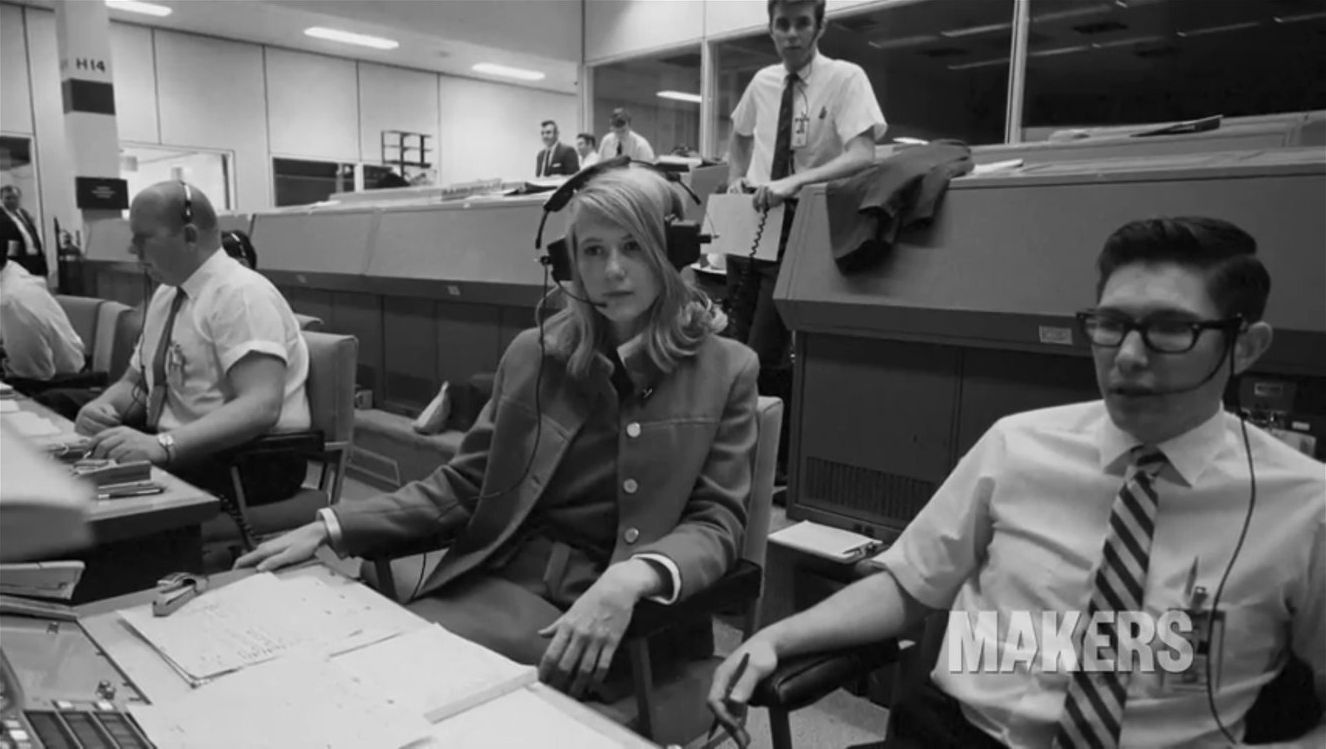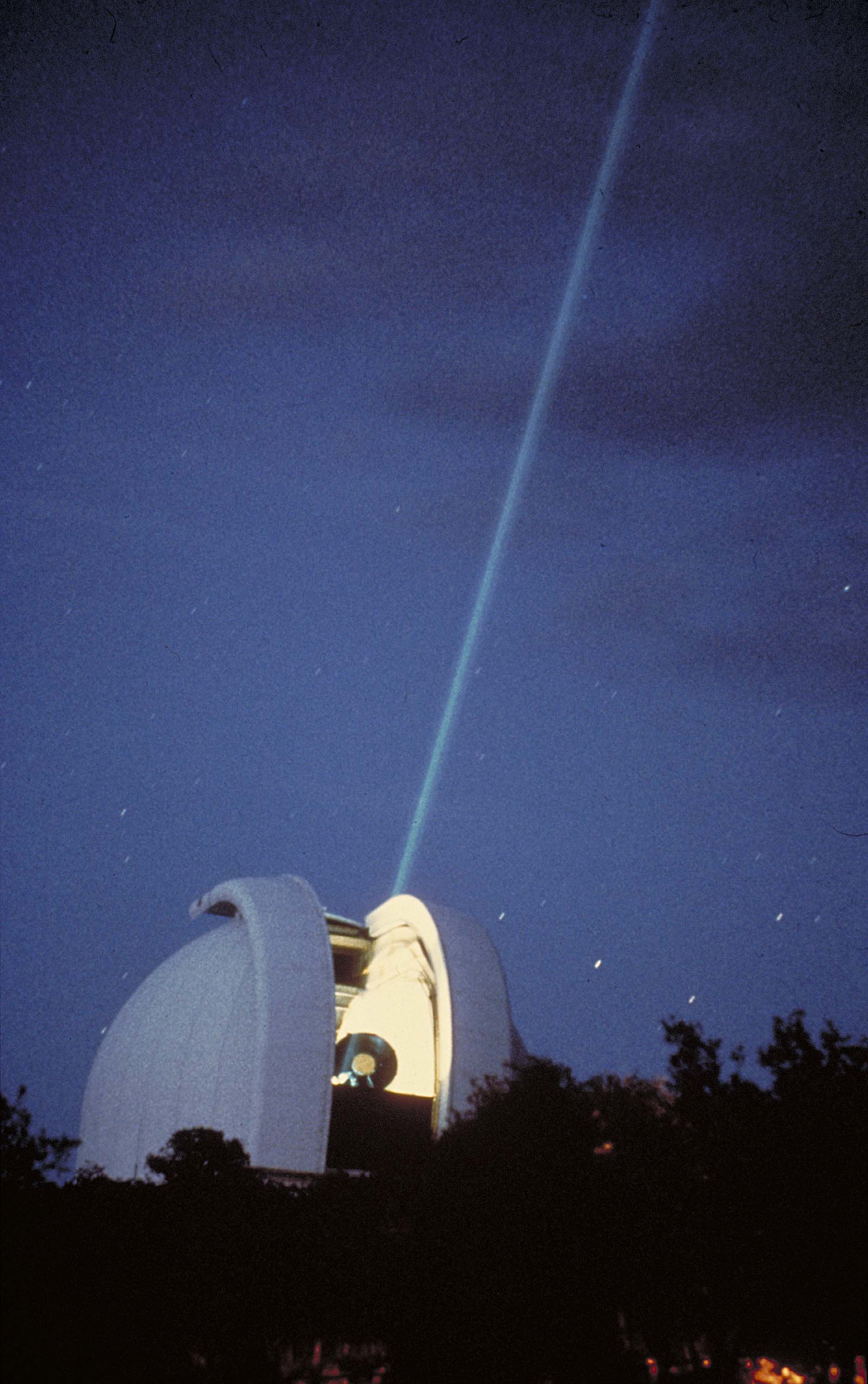Looking Back on Apollo 11, Seeing UT Reflected in NASA History

A seminal event in human history occurred 50 years ago this month when humans took their first steps on the Moon. This feat, the culmination of years of work by a multitude of people, happened with the involvement of many who started here in the University of Texas at Austin's College of Natural Sciences.
Among them is Frances "Poppy" Northcutt (B.A. Mathematics, '65), the first female engineer in NASA Mission Control, who has been profiled this year in multiple media outlets, including the Houston Chronicle. After graduation, Northcutt joined NASA as a contractor, beginning as a "computress" — one of the women hired to work with computers. Due to her inquisitive nature, she spent her nights studying code, line by line, to learn exactly how it worked, prompting her to ask vital questions that would reveal mistakes. Northcutt's tenacity and curiosity quickly earned her a promotion to mission control as an engineer.
She worked on Apollo 8 — the first manned mission to reach the Moon's orbit — calculating the return-to-Earth trajectories that would bring the crew home and on every subsequent Apollo mission, up to and including the fateful Apollo 13 mission. Her calculations helped return the astronauts on that unlucky mission back to Earth safely, and Northcutt and the other engineers received the Presidential Medal of Freedom for their part in rescuing the Apollo 13 crew.
The last mission to the Moon, Apollo 17, landed next to "Crater Poppy," so named in her honor.

Poppy Northcutt in Mission Control during one of the Apollo missions. From "Women in Space" by Makers.
UT Austin also has highlighted a number of Apollo 11 connections to the Forty Acres. For example, in 1968, Bob O'Rear (M.S. Mathematics, '66) landed what was "probably the most glamorous job you could find as a math guy, working in the space program." He put his math degree, computer programming skills and a minor in astrophysics to good use writing algorithms for the Apollo program's computers to calculate safe reentry paths for the returning astronauts.
O'Rear would go on to become one of the first-ever employees of Microsoft, helping to usher in the age of computing.
Working as an IBM contractor, Charles Raby (B.A. Mathematics, '64) helped develop, test and maintain software for NASA's manned spaceflight program, including the Apollo missions. The code he worked on was used to test and debug the software used by mission control, as well as train NASA flight controllers to prepare them for upcoming missions.
Robert Merriam (B.A. Mathematics, '64) began working for NASA in 1967, where his "expertise was on-orbit trajectory analysis, rendezvous launch targeting, and software development." He continued to work for NASA for decades, retiring in December 2014. During that time, Merriam was a part of the Apollo missions and many other projects, including the Space Shuttle, the X-38 and Mars missions.
Math majors were not the only Natural Sciences graduates involved with the Apollo missions.
Skip Evans (B.A. Zoology, '68) started working at the Manned Spacecraft Center on the Monday after Apollo 7 — the first manned Apollo flight — lifted off. He worked as part of the quarantine crew to identify potential hazards that materials used in the spacecraft presented to the astronauts, from fiberglass insulation to coolant leaks.
Evans worked in the Lunar Receiving Laboratory as well, where he gained an inside look at what happens when astronauts return home with samples. After Apollo 11, he "was able to see the lunar rocks that, the day before, had been on the moon. That was a surreal moment."
Don Johnson (B.A. Microbiology, '68) also worked at NASA's Lunar Receiving Laboratory in Houston, where he helped test the rock samples returned from the moon. He says, "It was an exciting time for a young microbiologist like me."

McDonald Observatory astronomers measured the Earth-Moon distance by beaming a laser from the 2.7-meter Harlan J. Smith Telescope to reflectors placed on the Moon by Apollo astronauts. Credit: Frank Armstrong/UT-Austin.
When the Apollo 11 astronauts stepped onto the moon, they left behind more than just footprints. They placed a special mirror that would reflect a laser beam directly back to its source, allowing for precise measurements of the Earth-Moon distance. Beginning in 1969, astronomers at UT's McDonald Observatory routinely calculated this distance using the 107-inch Harlan J. Smith Telescope. UT astronomers continued the project – for another four decades.
As NASA begins to plan for sending humans to Mars — and possibly a return to the Moon, other types of exploration led by UT Austin alumni are inspiring a new generation. One excellent example: Alan Stern, who has bachelor's degrees in physics and astronomy as well as master's degrees in aerospace and civil engineering from UT Austin, is principal investigator of New Horizons, an unmanned mission to the outskirts of our solar system. After more than nine years, New Horizons' probe brought us face to face with Pluto, sending back the first photos from this distant outpost in our solar system. This year, the mission provided an unprecedented look at an object in the Kuiper Belt, called Ultima Thule (which, as the proud Longhorn Stern has said, not only can be shortened to U-T, it also has a burnt orange shade to it).
Even decades later the Apollo missions continue to inspire and involve UT Austin alumni. A great way to learn about Apollo 11, in fact, is to check out First Men on the Moon, an online experience by alumnus Tyler Ham (B.A. Mathematics, '06). The website won a Webby Award in 2013 and lets you relive some of the initial communications between the astronauts and mission control.
